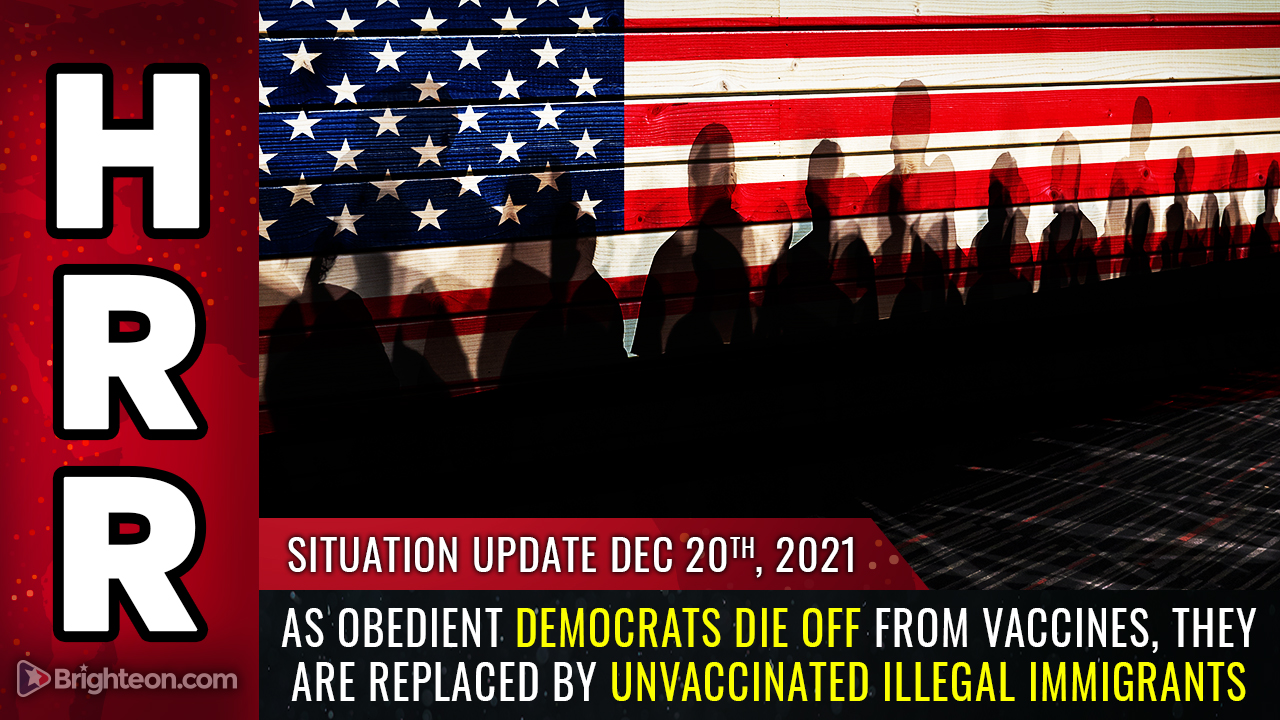Eye doctors say pandemic lockdowns made children’s eye health worse
07/26/2021 / By Ramon Tomey

Eye doctors said that nearsightedness in children increased during the Wuhan coronavirus (COVID-19) pandemic. They attributed the rise of myopia cases to increased screen time on mobile devices and computers, and less time spent outside the house. Thus, eye doctors suggested that children spend more time outdoors, take breaks from looking at screens and protect their eyes using special contact lenses or eye drops.
Millions of children in the U.S. have spent much more time looking at screens during the pandemic – thanks to lockdown mandates and virtual classes. Some students have been attending online classes for more than a year now after in-person classes were prohibited. While earlier research has suggested the impact of online classes on children’s mental health, recent research has shined a light on how they affect children’s vision.
One such study done in China looked at the rates of myopia in children from 2015 to 2020. The authors looked at 120,000 children who were forced to stay home during national lockdowns. According to their study, the number of nearsighted children between six to eight years old was three times higher compared to the previous five years. Their findings were published back in January 2021 in JAMA Ophthalmology.
The authors elaborated that this increase in myopia rates was not observed in older children, i.e. those aged nine to 13, despite spending more time in front of screens. Based on this, they surmised that younger children may be more sensitive to environmental change than older ones. Nevertheless, a child who develops myopia at a younger age could experience worse eye problems later in life.
Nearsightedness was already a problem even before the onset of the COVID-19 pandemic. But the pandemic accelerated the condition for children around the world. Back in 2016, the Australia-based Brien Holden Vision Institute said almost five billion people – half the world’s population – may suffer from myopia by 2050.
The institute pointed out “lifestyle changes resulting from a combination of decreased time outdoors and increased near-work activities” as a major reason for rising nearsightedness. It also warned that the sudden spike in myopia cases could make the condition a leading cause of permanent blindness. (Related: Put the phone down: Too much screen time can harm your eyes and cause vision loss.)
Fortunately, there are ways to combat nearsightedness before it worsens
Eye experts have expressed concern with the rising cases of nearsightedness. They also pointed out that children and adults with high myopia – a particularly severe level of nearsightedness – are at risk of developing worse eye problems such as cataracts and glaucoma.
A June 1 report by The Wall Street Journal (WSJ) puts forward two theories for the increasing nearsightedness during the pandemic. First, children’s eyes adjust to accommodate a close focus – especially when they look at screens or books for long periods. This causes the eyes’ shape to change and elongates over time.
Second, decreased periods outdoors contribute to rising myopia rates as people tend to look farther away when outside. Natural light and outdoor physical activity also play a role in keeping myopia at bay. However, adults tend not to experience worsening myopia as eye growth stabilizes after childhood.
Wills Eye Hospital Ophthalmologist-in-Chief Julia Haller told WSJ: “We know that focusing up close and not being outside has increased the rate of myopia. There’s been a huge impact from the pandemic.” (Related: Screen time is hard on your eyes: Here’s how to protect them.)
Other eye doctors attested to more children experiencing nearsightedness. Pediatric ophthalmologist Allison Babiuch shared that many children coming into her Ohio clinic now have worse vision. “We’re seeing a big jump in their prescriptions,” she said.
Meanwhile, Baltimore pediatric ophthalmologist Megan Collins said that her young patients attending classes often have myopia. She elaborated: “I’ve seen some younger kids that last year, when I saw them, they had no significant refractive error. Nothing that required glasses. Within a year, they’ve had a pretty substantial change in their vision.”
The WSJ report suggested three ways that children can keep myopia at bay. First, children should be encouraged to spend more time outdoors. The upcoming summer season is an opportunity for children to take a break from their computers or mobile devices – and reduce their risk of developing myopia. Collins recommended that children spend at least one hour outdoors doing a physical activity to slow the progress of nearsightedness.
Second, children should be taught the 20/20/20 rule. Babiuch recommends that children take a 20-second break for every 20 minutes of screen time by looking at objects 20 feet away. Third, children should be reminded to blink more while looking at screens. According to Babiuch, people tend to blink less when staring at a screen – which causes eyes to be strained and dried out.
Visit EyeHealth.news to read more articles about the COVID-19 pandemic’s effects on the eyes.
Sources include:
Tagged Under: children, children's health, coronavirus lockdowns, covid-19 pandemic, eye health, eye problems, lockdown mandates, lockdowns, myopia, nearsightedness, Online learning, pandemic, virtual classes, vision problems, Wuhan coronavirus
RECENT NEWS & ARTICLES
Pandemic.News is a fact-based public education website published by Pandemic News Features, LLC.
All content copyright © 2018 by Pandemic News Features, LLC.
Contact Us with Tips or Corrections
All trademarks, registered trademarks and servicemarks mentioned on this site are the property of their respective owners.





















